The State of Email Marketers’ Tech Stack
The journey of an email from creation to sending takes hours of behind-the-scenes effort.
Email marketers need to consider not only crafting, designing, and developing individual emails but also strategy, planning, operations, and deliverability—and of course, coordinating these efforts with the rest of your team.
That’s why the MVP of any email marketing team is an integrated marketing tech stack. While we have our own favorite tools here at Litmus (we love you, Slack!), we wanted to know what real email marketers used to get their campaigns out the door and into the hands of their subscribers.
To find out, we asked 938 email friends in our annual State of Email survey—thank you if you responded, you rock!—and here’s what we learned:
Why your email service provider matters the most
The core of any email marketing tech stack is your email service provider (ESP).
Our respondents were split on whether to go all-in on one ESP or use several based on their needs: 46% of respondents chose just one ESP or marketing automation platform (MAP) to send emails, while a combined 49% use more than one ESP.

Of those who used more than one ESP, most respondents used two. This is a common split, with promotional emails from one ESP and transactional emails from another; or sometimes it makes more sense for the marketing team to use one ESP and sales using another.
In the past, we’ve asked about what code editors developers use to build emails, but this is the first year we’ve seen “Code editor in my ESP” take the top spot at 20%, toppling Adobe Dreamweaver (14%) and our beloved Litmus Builder (9%).
It goes to show that more ESPs are doing the heavy lifting for email marketers, adding features that consolidate the marketing tech stack.
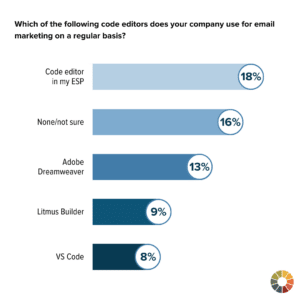
When it comes to specific ESPs in play, Salesforce Marketing Cloud continued to dominate—it’s been one of the most popular marketing automation tools since its inception in 1999—alongside big names like MailChimp, HubSpot, and Marketo.
You could consider all of these complete technology suites for the entire marketing team, with website, sales, and social features in addition to their email marketing roots. Rounding out the top five (and rising in ranking since 2021) is Sendgrid, a transactional-focused platform owned by Twilio.
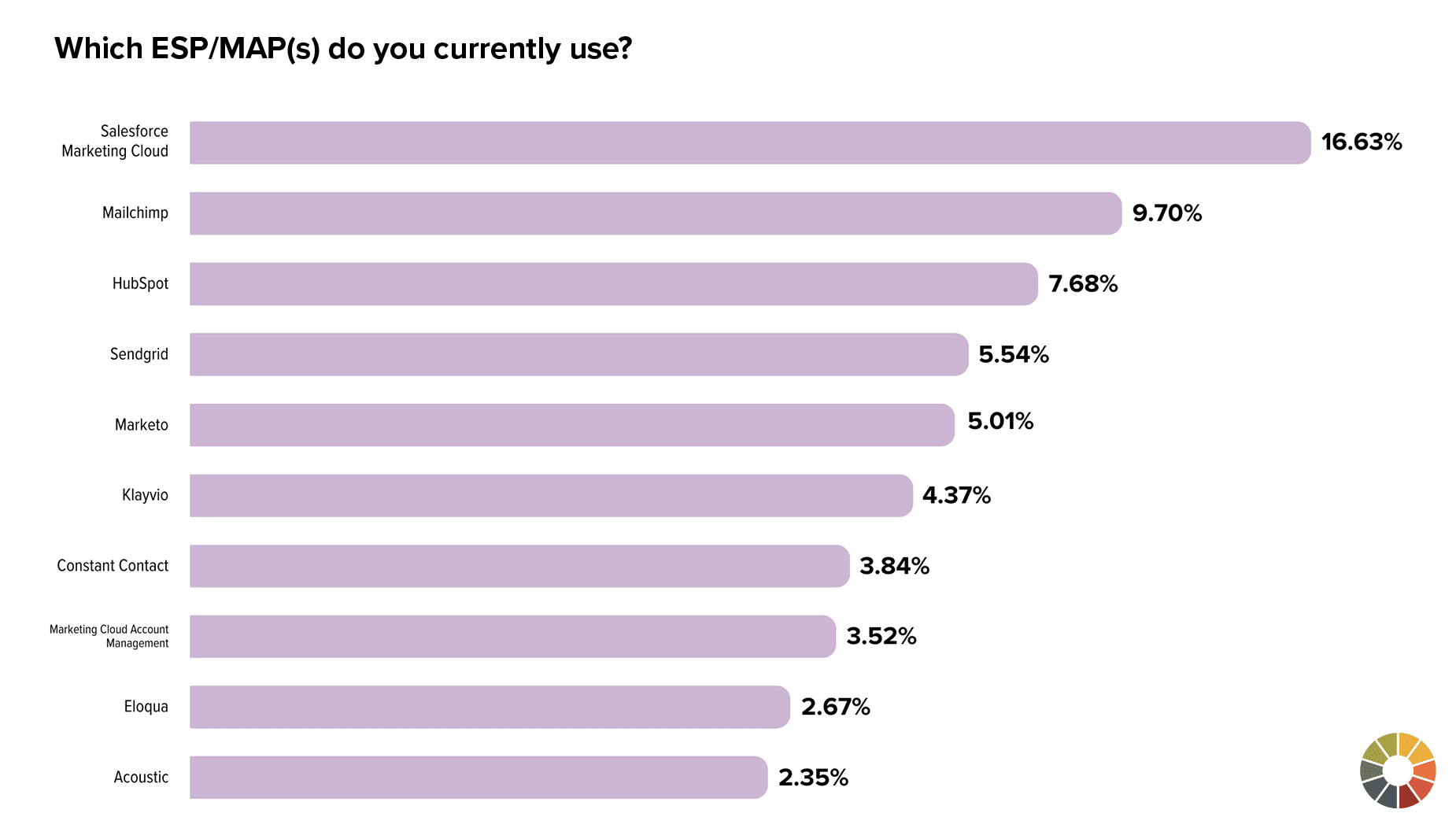
Click here to see the full results.
The vast majority of our respondents plan to stick with their ESP choice: 61% had no plans to switch in the next year.
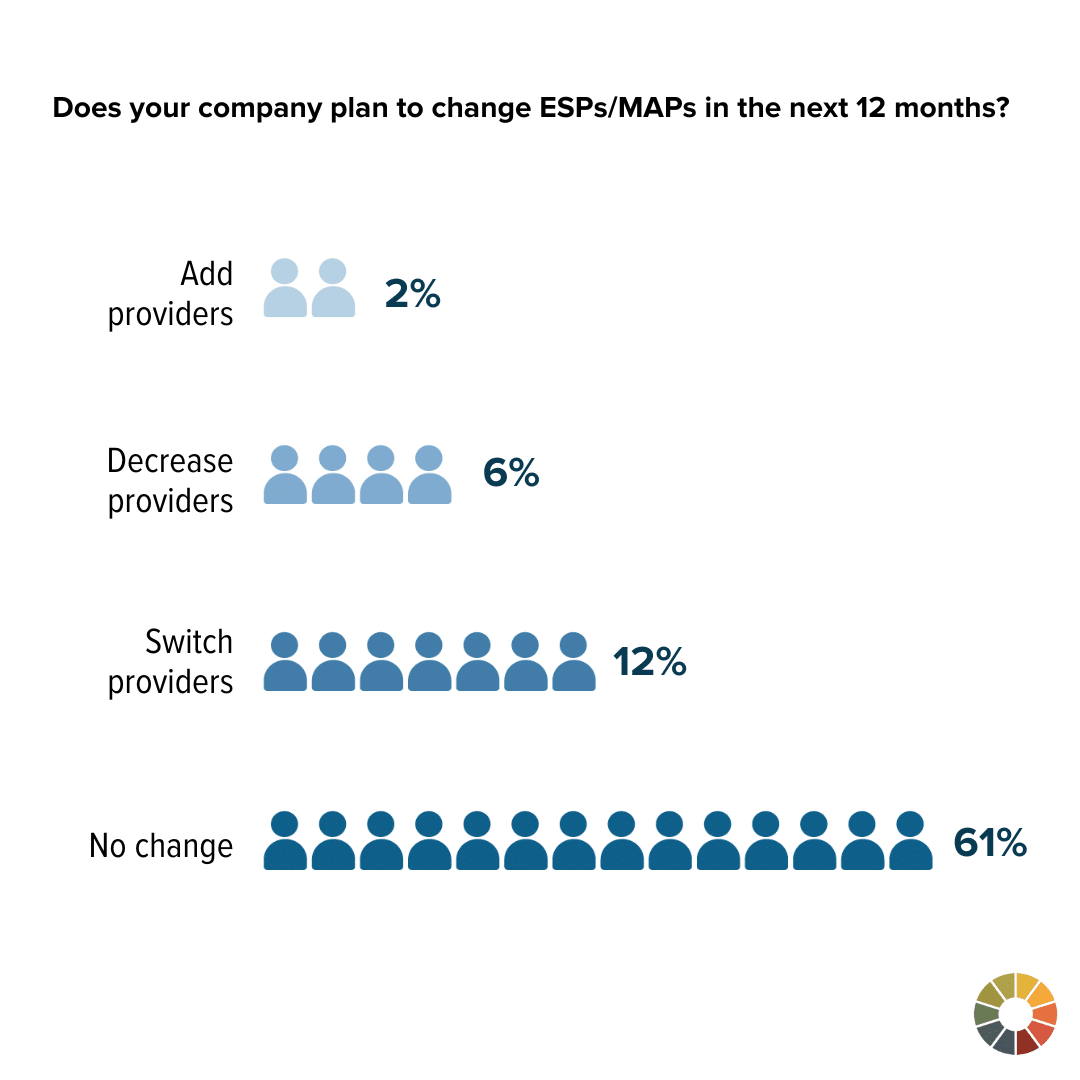
This may not mean they’re fully satisfied with their purchase, though. Switching email service providers is notoriously costly and difficult, particularly when it comes to transferring the gold-mine of data between one platform and another.
The cost may be worth it for systems that better talk to one another (or for those investing in the top five platforms, one system that can literally do everything.)
A third of our respondents told us their email marketing was “poorly” or “very poorly” integrated into the rest of their marketing channels, making it difficult to add personalization and segmentation into email or to get insights about how email performance contributes to the bottom line.
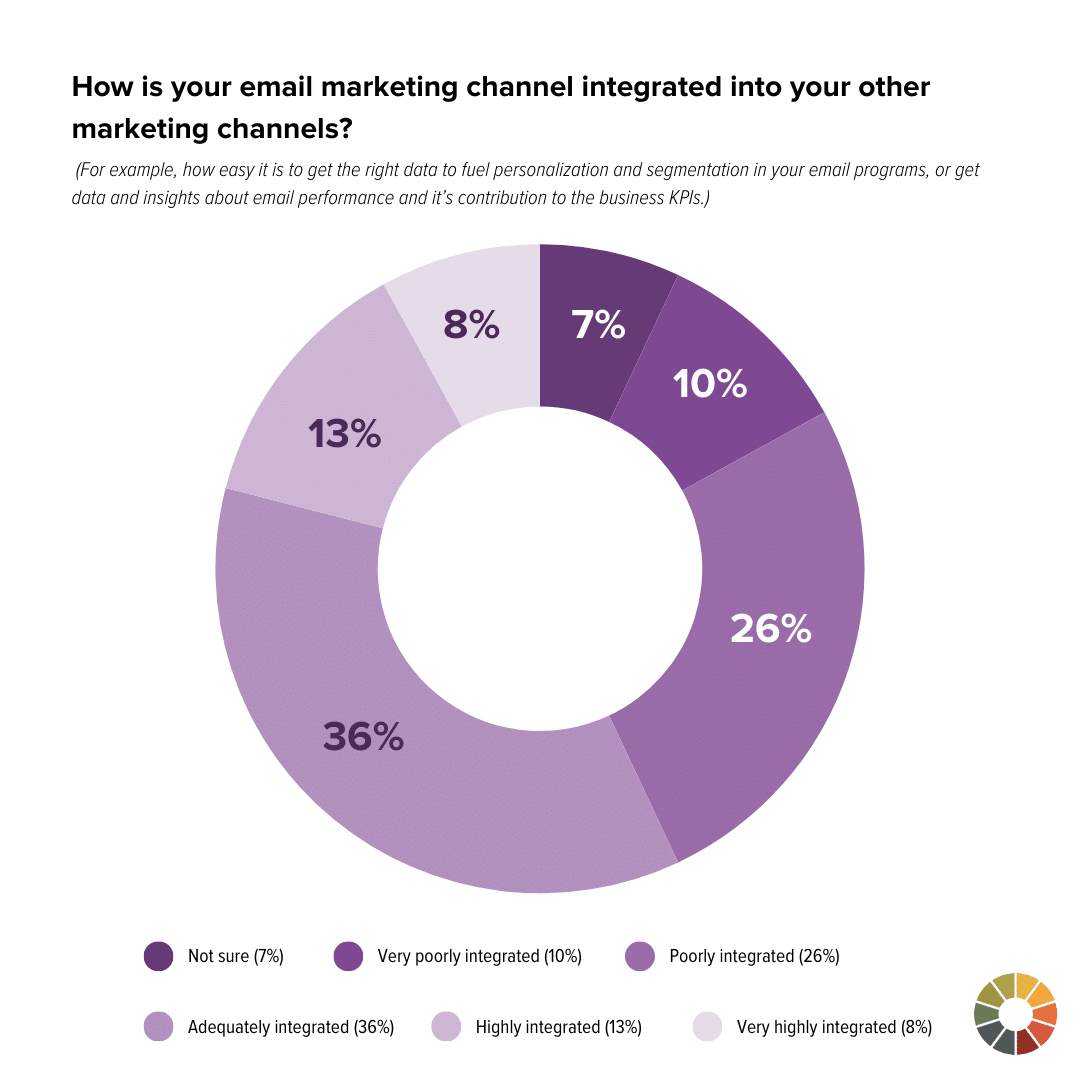
That’s likely why 30% of our respondents said they were investing more into technology integration.
Both consumers and business customers expect a level of personalization beyond “first name.” They’re looking for emails that match their behaviors and habits. If you’ve ever received an email promoting a product you just purchased, you know what we’re talking about.
This means access to lots and lots of data, and that multiple systems and teams need to work together to feed the right information at the right time into email marketing campaigns—no easy feat.
Measure email marketing performance beyond built-in tools
We love to talk about crafting beautiful emails that make our ‘lil email geek hearts happy. But we all know that the real reason we’re sending emails is to help build relationships that will eventually generate revenue for our brands, either directly or indirectly.
So when we asked email marketers what metrics they use to measure performance, imagine our surprise that ROI didn’t top the list (it wasn’t even in the top five.) Instead, email marketers overwhelmingly focused on open rates—a metric that has become less and less useful with Apple’s Mail Privacy Protection.

Click here to see the full results.
That may be because of how email marketers choose to measure their efforts. The majority of respondents use their built-in ESP tools to track their email marketing performance, which often focuses on metrics like opens, clicks, and unsubscribes—the stuff that we can control.
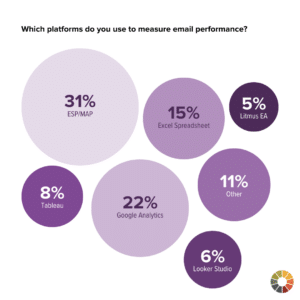
Understanding how an email campaign actually moves the needle on sales and revenue can be difficult to do without adding another layer of analytics like Google Analytics (#2) or more advanced programs like Tableau. A big, big hug to all those email marketers out there working on custom spreadsheets in Excel and Google—you’re getting it done and doing the dirty work.
Deliverability remains a black box
How your email reaches the inbox has a reputation for feeling a little bit like magic and hope. But the technology exists to understand (and improve) your deliverability—which is why seeing the majority of our respondents tell us they don’t actually monitor deliverability or aren’t sure how it works is a little disappointing.
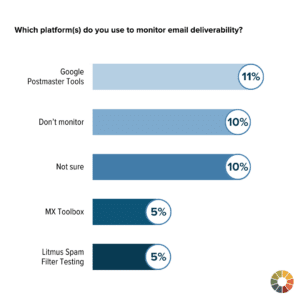
The top used tools on this list, Google Postmaster and MX Toolbox, are free. But they don’t necessarily help you figure out why your emails hit the spam filter or provide actionable advice to fix them.
As more email clients institute new rules (looking at you, Gmail and Yahoo’s one-click unsubscribe) understanding deliverability is going to be a big differentiator in your email marketing toolbox. Adding this to your existing tech stack can help give you a bigger picture of your email marketing performance and may solve lingering questions about your reach.
DIY design tools are becoming more popular
When it comes to actually creating emails themselves, marketers still spend a lot of time in Adobe Photoshop, the OG design king. But in the last few years, we’ve noticed more intuitive, DIY-style tools rising in popularity.

In 2023, Adobe went 1-2-3 on the most popular design tools, but this year, Figma moved to #2. Canva held its #4 spot, likely as more email marketers have to learn how to do more with less, and it’s known as the best tool for non-designers to use.
There’s a reason Adobe products come in at the top—they’re some of the most robust tools you can work with. But for teams that don’t have a dedicated designer (or simply want a tool that you don’t need 10,000 hours to become proficient in), Canva is a great option.
How marketing teams do it all
The average email takes about two weeks to produce, and at any given time, 46% of email marketers have up to five emails in production. Compared to 2023, only 23% of respondents said they have up to five emails in production, at any given time. Email marketers are being asked to ramp up significantly.
To help move things along, email marketers use project management tools. The top five probably come as no surprise, with sprint-friendly Jira taking the top spot, followed by other project management powerhouses like Asana, Trello, Monday, and Adobe Workfront.
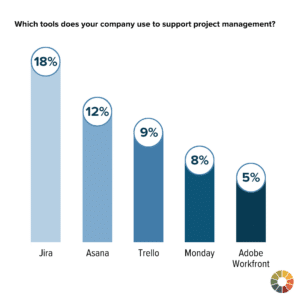
Coordinating copywriters, designers, developers, and reviewers for email campaigns is one of the biggest challenges email marketers face. 41% of email marketers say building the emails themselves tends to hold up production, followed by designing (40%), and testing (39%).
Spinning up an email marketing workflow that can crank out emails without losing quality takes the right technology and the right team. When we asked who owned or managed the operations side of working with an ESP, more than a third (38%) said the email marketing team.
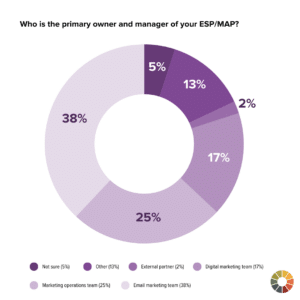
But we’re also seeing larger, more tech-focused squads take ownership, like the marketing operations team (25%), or a digital marketing team (17%).
This reflects a more integrated approach to organizing a marketing team, as opposed to a channels-based approach. This method may help teams share data more effectively and create consistent marketing campaigns across channels.

Jaina Mistry
Jaina Mistry is the Director, Brand & Content Marketing at Litmus
